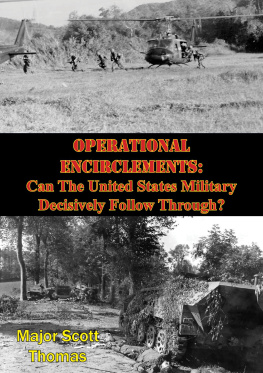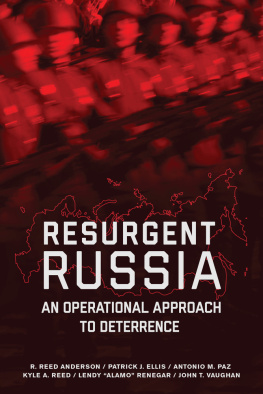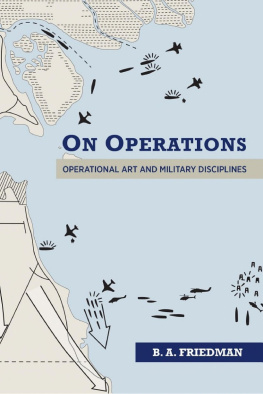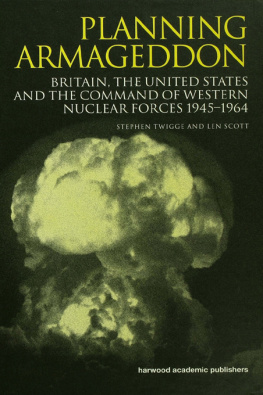This edition is published by PICKLE PARTNERS PUBLISHINGwww.picklepartnerspublishing.com
To join our mailing list for new titles or for issues with our books picklepublishing@gmail.com
Or on Facebook
Text originally published in 2009 under the same title.
Pickle Partners Publishing 2015, all rights reserved. No part of this publication may be reproduced, stored in a retrieval system or transmitted by any means, electrical, mechanical or otherwise without the written permission of the copyright holder.
Publishers Note
Although in most cases we have retained the Authors original spelling and grammar to authentically reproduce the work of the Author and the original intent of such material, some additional notes and clarifications have been added for the modern readers benefit.
We have also made every effort to include all maps and illustrations of the original edition the limitations of formatting do not allow of including larger maps, we will upload as many of these maps as possible.
OPERATIONAL ENCIRCLEMENTS: CAN THE UNITED STATES MILITARY DECISIVELY FOLLOW THROUGH?
BY
MAJ SCOTT THOMAS, US ARMY
TABLE OF CONTENTS
Contents
ABSTRACT
This study is a historical analysis of how encirclement operations have been and still are important offensive operations. These operations need to be given priority in planning and execution by the United States Military. Encirclement operations have proven to be decisive military operations throughout history; regardless of the composition and disposition of the enemy encircled. The U.S. military has maintained the decisive edge on the battlefield for over sixty years. Even with the benefits of technology, air supremacy, firepower, mobility, and maneuver, the U.S. military has not yet been completely successful in planning and executing encirclement operations. Today the U.S. military is arguably the best equipped and trained force in history. Even with this professional force, it is questionable whether the U.S. military could successfully execute an encirclement operation. Therefore this monograph provides a historical examination as to why the U.S. military has been unable to reap the benefits of the offensive maneuver of encirclement.
To accomplish this examination, this monograph conducts an analysis of four historical case studies: The Argentan-Falaise Pocket, the Battle of Ia Drang, Doctrinal Revolution from 1986-2001, and Operation Anaconda. The analysis identifies the U.S. military has placed an over reliance on firepower to replace the maneuver of ground combat units. Secondly, this monograph also argues the U.S. military has placed too much emphasis on technology. This belief in technology has reduced the number of ground combat units employed in offensive operations. Additionally, U.S. military doctrine historically has not provided the foundation necessary to support and encourage the planning and execution of encirclement operations. These deficiencies together have prevented the U.S. military from capitalizing on the decisive nature resulting from the speed and shock of correctly executed encirclement operations.
This paper concludes the Army must acknowledge and amend its doctrine to reflect the encirclement operation as a stand-alone form of offensive maneuver. Furthermore, encirclement operations are not just a result of a pursuit or exploitation operation. Encirclement operations can and should be planned as an independent operation. Prioritizing these operations by making them an independent mission will ensure U.S. forces have the resources and combat power needed to ensure success on the battlefield.
INTRODUCTION
When the enemy is driven back, we have failed, and when he is cut off, encircled and dispersed, we have succeeded. Field Marshal Prince Aleksander V. Suvorov
The ultimate objective of successfully maneuvering to achieve an operational encirclement around ones enemy has been an integral part of warfare since the Carthaginian commander Hannibal Barca encircled and destroyed a Roman army numbering over 80,000 soldiers in the Battle of Cannae in 216 B.C. Historical battles provide a stout testament to the decisive effect encirclement operations have had on the outcome of military operations.
Achieving these bold operations has always heavily depended on the encircling forces ability to quickly mass combat forces and maneuver into a position of advantage preventing the safe withdrawal of the opposing force. Once accomplished, this feat more than any other military action can be the physical and psychological lynchpin needed to demoralize the enemy to the point of utter incapacitation. Even the insurgents opposing the U.S. military today are still just as vulnerable to suffering from these same ill-effects once encircled. Any fighting force that becomes completely encircled and cut-off from their lines of operation, communication, and ability to withdraw will be severely challenged to maintain their capability and will to fight.
Following the attacks on 9/11, the President of the United States declared a Global War on Terror (GWOT). This declaration had a significant impact on the military of the United States of America. This new war signaled for the military, the need to make the cognitive shift from fighting a Cold War era conventional military codified by established doctrinal patterns. These patterns enabled the U.S. military to identify and target its adversaries enabling the concentration of friendly combat power. No longer was the enemy bounded by political establishments. The enemy had no respective geographical boundaries to protect and therefore could fight decentralized. The stage was now set for the current and estimated future commitments in regard to the role of the United States military within the strategic, operational, and tactical arenas.
Prior to the declaration of the Global War On Terror, the U.S. militarys professionalism and technological superiority on the modern battlefield had established it as the most lethal and destructive fighting force to emerge from the Cold War following the disintegration of the Soviet Union. This claim was firmly established when the United States military, along with its coalition partners, forcefully expelled Iraqi forces and liberated Kuwait during in the early 1990s. The world watched the tempo and speed with which the U.S. military easily swept aside the once respected and feared Iraqi army. It was during this war when it became visually apparent to the world, that no conventional military force could directly challenge the United States military toe to toe and hope to win.
When the U. S. military targeted its first adversary in retaliation for the September 11 th terrorist attacks, this technological supremacy in weapons and communications was further enhanced. It was only a limited number of special operations teams along with the assistance of the U.S. Air Force that provided the decisive element needed to ensure a Northern Alliance victory in overthrowing the Taliban regime in Afghanistan in 2001. This victory was followed by the equally impressive ground war during Operation Iraqi Freedom in 2003. Unfortunately both of these military operations were soon overshadowed by emergence of one of the oldest forms of warfare known to man. As Bard E. ONeill states:
Insurgency, of course, is hardly a new phenomenon, as Roman armies could have reported from Gaul, Judea, or elsewhere. Indeed, insurgency has probably been the most prevalent type of armed conflict since the creation of organized political communities.
Both Iraq and Afghanistan erupted into full blown insurgencies in the wake of decisive military victories achieved by conventional forces against more or less conventional forces. These circumstances have since resulted in a dramatic cognitive upheaval, causing dramatic debates on predicting the U. S. militarys role and focus in future war-fighting around the globe.













